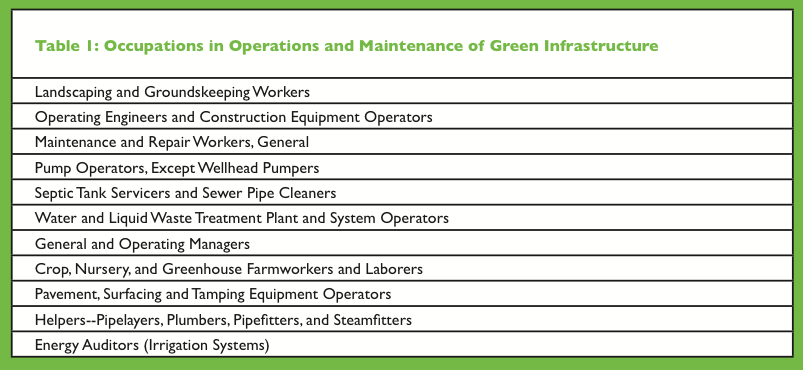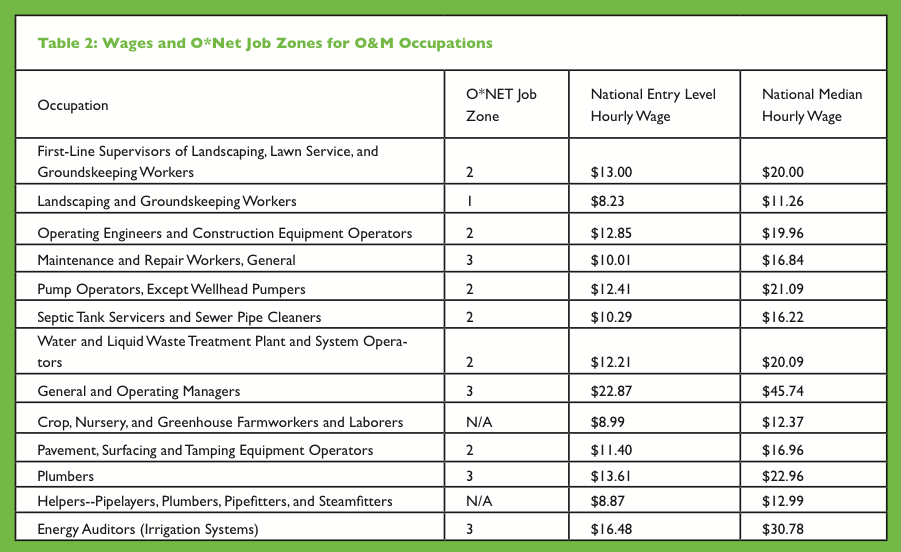LAND STUDIO
GREEN FOR ALL
Chapter 1: Setting the Stage
Section 1: Green Infrastructure Potential at the National Level and in Cleveland
Basic water infrastructure in the U.S. is crumbling. As a result, we see a steady stream of sewage overflows and leaks that put us all at risk of contamination from bacteria, parasites, viruses, pharmaceuticals, cleaning products, and other chemicals. According to the Environmental Protection Agency (EPA), there are now between 23,000 and 75,000 sanitary sewer overflows in this country each year, and 3.5 million Americans get sick just from swimming in polluted water. Meanwhile, 40 percent of our lakes and rivers are too polluted to support recreational activities and aquatic life.
Meeting the water challenge – building a sustainable water future – will require a national effort. The U.S. must strive to increase efficiency of water use, restore waterways and groundwater tables, repair decaying water infrastructure, decrease polluted runoff, and prevent contamination.
Cleaning up our water will also create opportunities. Investing in water infrastructure can create jobs, reduce pollution, improve public health, and promote economic growth. The EPA has estimated that the U.S. needs to invest at least $188.4 billion over the next five years just to make water systems safe and reliable. This level of investment represents an opportunity to create roughly 2 million jobs. Investments in our water infrastructure would also generate an estimated $265.6 billion in economic activity.
By using green infrastructure – including permeable pavement, rain gardens, constructed wetlands, and green roofs – Cities can reduce stormwater runoff and pollutants, protect groundwater, and even improve air quality, at the same time that green infrastructure is improving the environment and offering accessible job opportunities and career development entry-points to communities most impacted by economic and environmental crisis.
In the coming years, thousands of new green infrastructure projects will be installed throughout the country. As a cost-effective strategy to comply with the requirements of the Clean Water Act, some cities will create enough green infrastructure work in the coming decades to support a new industry that installs, supplies, maintains, and monitors green infrastructure. For example, NewYork City has committed $2.4 billion to green infrastructure projects over the next 20 years, and Philadelphia will spend approximately $1.67 billion on green infrastructure through 2036. As an indication of the scaling up of green infrastructure investment over the next few years in cities across the country, NewYork City has already allocated $192 million to green infrastructure improvements through 2015, and NEORSD plans to spend at least $42 million on green infrastructure through 2020 in areas around the City of Cleveland, which is the subject of this study.
Read full report (PDF) here: Seeing Green
About LAND studio
www.land-studio.org
LAND studio works to identify, create and implement a public space vision for Cleveland. Its mission is to create places and connect people through public art, sustainable building and design, collaborative planning, and dynamic programming. LAND studio strives for balance in its portfolio by completing projects in the city’s most visible public spaces as well as its disadvantaged communities. For more information about LAND studio, visit our website at www.land-studio.org.
About Green For All
www.greenforall.org
Green For All is a national organization working to build an inclusive green economy strong enough to lift people out of poverty. It works in collaboration with the business, government, labor, and grassroots communities to increase quality jobs and opportunities in the green economy – all while holding the most vulnerable people at the center of its agenda. For more information about Green for All, visit our website at www.greenforall.org.
Tags: Cleveland, Green for All, LAND studio, Ohio, Seeing Green








 RSS Feed
RSS Feed